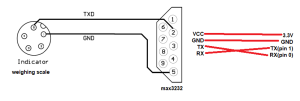Ensuring that our product addresses a desired need in the market is critical to its reception and success amongst the public. This week, the team would like to explore this issue through 3 lenses: Steven will explore part A, Surya will explore Part B, and Grace will explore part C.
Steven: With respect to considerations of public health, safety and welfare, our solution is designed to improve physical well-being for users by monitoring caloric intake. Likewise, our product aims to reduce the psychological burden of tracking what and how much you eat as our product does all the tracking for you. Furthermore, keeping track and inventory of all the food you buy at the store can be a burden, and people are quite forgetful sometimes. Our product reduces the stress in remembering what is in your fridge or pantry by keeping count of every item. We have ambitious goals for our product to reduce over and under eating which aims to better the physical health and well-being of the public. With respect to safety, our product will have limited hazards as it will consist of a sturdy physical structure with a scale, camera, and lights. The components will be as minimalistic as possible, and we will conduct rigorous testing to make sure there are no malfunctions. The lights will require as little power as possible and will be properly embedded into the walls. Likewise, the camera will be off whenever the scale reading is 0 as a result the product will only turn on when an item is put on the scale.
Surya: Consideration of social factors, which relate to extended social groups with distinct sociocultural, political, and/or economic affiliations, is crucial in our increasingly interconnected environment. With this in mind, there are several key themes that we seek to account for in our design. First is the notion of accommodating varying dietary preferences: whether this be due to medical reasons, religious restrictions, or observance of regional cuisine, our algorithm looks to maintain as unbiased a performance as possible in its classification approach. We look to achieve this accessibility in several ways. This involves details in the image recognition training process and enhanced user-user interaction on the application side that allows for features such as transparent sourcing of nutritional information and customizable dietary profiles (vegan, gluten-free, keto, etc.). Embracing diversity through building a prototype that lacks systematic bias is key to our consideration of social factors we look to meet in our design.
Grace: With consideration of economic factors related to the system of production, distribution, and consumption of goods and services, a big concern that arose during our research is the amount of food waste generated by people on a daily basis in the United States. Not only does this pose sustainability challenges in the long run from an economic point of view, but also contributes to a substantial amount of landfill waste. Increased amounts of waste also require more management and environmental cleanup, leading to costly endeavors and potentially higher taxes for residents. Our solution, rather than focusing solely on mitigating the system of production and distribution of food goods, aims to assist users minimize waste during their food purchasing and consumption processes. While it does not directly address issues that may arise during production and distribution, helping users automate their daily calorie tracking can at least help them make more informed purchases and reduce waste as a whole. By providing accurate nutritional information, from label reading and food classification, along with better control over food inventory, our solution enables users to make more efficient use of the food at hand and consequently decrease food spoilage rates in general. We anticipate our product to not only peoples’ wellness habits, but also make a positive economic impact on our society as a whole.
For our team’s status, we identified various risks that might prove to be an issue for our project. Surya was able to write down various risks regarding scale integration and using the Arduino as a middle component in our product. Likewise, Steven discovered risks with the image classification design and the various trade offs. As a result, we need to analyze our design decisions more next week and finalize it. Our contingency plans involve the various backup options we have which include the other design choices (i.e. buying multiple scales and Arduinos).
Likewise, we specified our schedule more as we got a better understanding of the necessary work and steps of our project. Here is the new Gantt chart that will be added to our design presentation:

Next week, we will make extensive efforts to produce results in terms of website design, image classification design, and physical product creation and integration.


